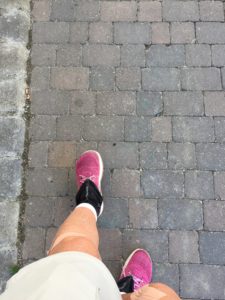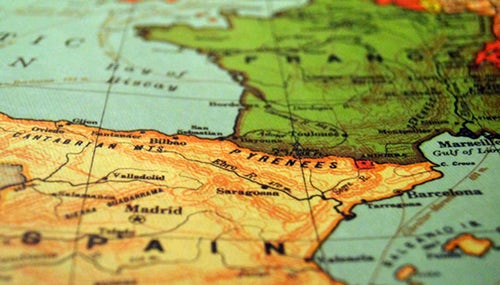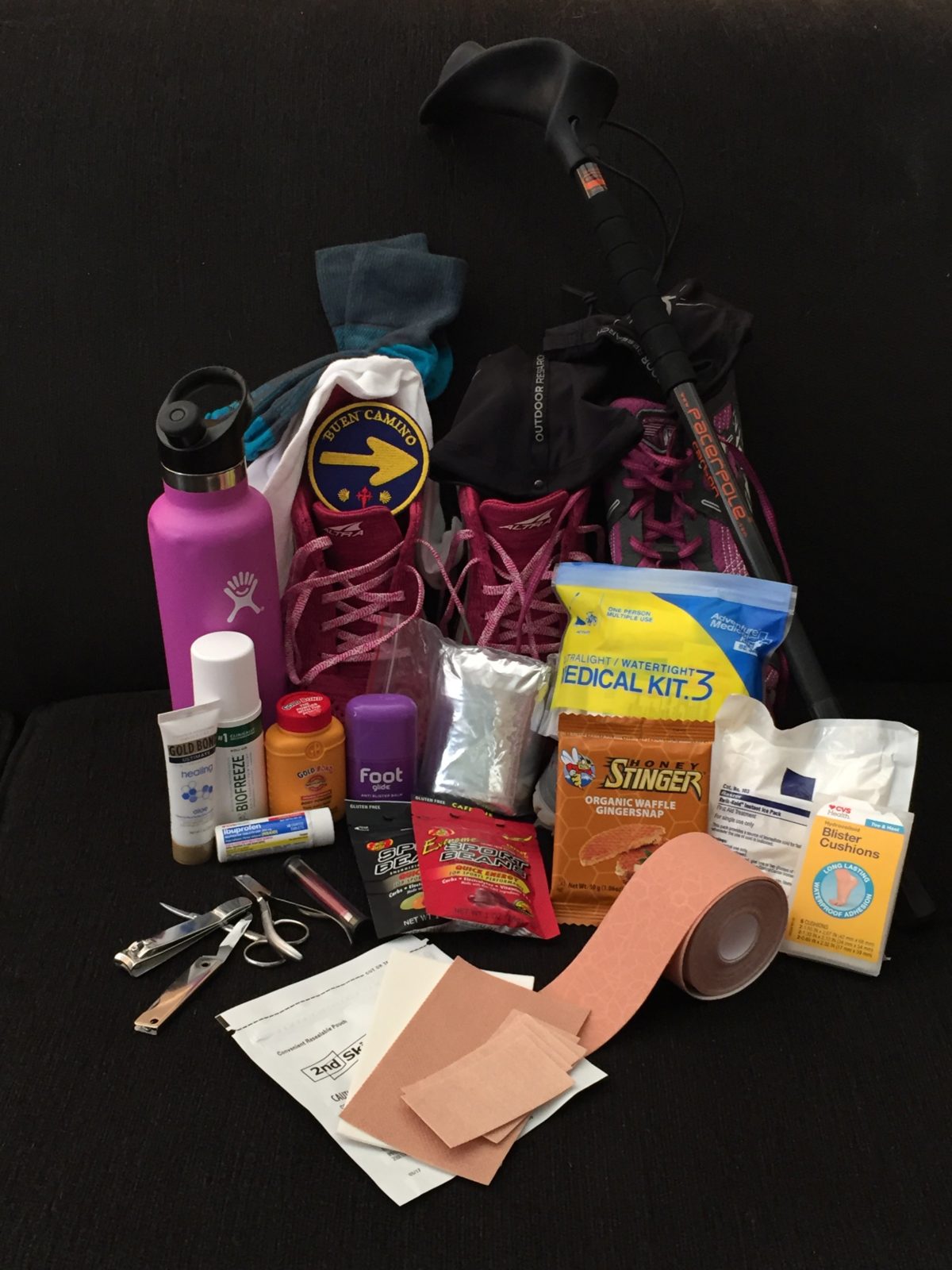I’m not going to need to use hiking poles until I’m old! That was my thinking, although I wouldn’t have been able to define what “old” was when those thoughts crossed my mind five years ago.
Then I read an article by a guy who writes for a hiking magazine. A young guy, late twenties or early thirties. He thought hiking poles were for wimps or decrepits, too, until he caved in to a friend’s advice and used them to hike the Kalalau Trail on Hawaii’s island of Kauai. He was an instant convert. In the article, he noted how the poles reduced the load on his knees and made the trek easier and more enjoyable. I could relate. Our family hiked part of the Kalaulua Trail a couple of years earlier, and the return trip was murder, for all of us, including the high school and college kids.
I mentioned the article to my older son—25 at the time—who is an avid hiker. He said, “You, know, I would have said the same thing, until I got my poles. (He got poles?!) And now I use them whenever I’m out hiking. They make a huge difference. Lyndsey (his then fiancée, now wife) loves them.”
“Hmmm, maybe I should get some.” As soon as I voiced that thought, he offered to buy a pair for me for my birthday, and I told him that’s a great present! (Which it is!)
So, I got my poles and have rarely walked even our neighborhood since then without at least one in my hand. And then my younger son got me some spiffy ergonomic models from England last year for Christmas. A Camino alumni highly recommended them. I used mine on our Camino last month, and they saved my legs (and maybe my entire body) on more than one occasion. Chris used his poles too. A couple of years ago I bought a pair for him like the kind Parker had given me.
People have stopped me on hikes around Tucson to ask about my poles and why I use them. After the conversations they’re excited about buying a pair for themselves.
Why do I recommend hiking poles foreveryone? I’ll give you my reasons.
3 reasons all hikers (especially women over 50 years) should use hiking poles:
- The number reason, hands down.
They save your knees!
When you’re trudging uphill, you can lean on them to reduce the load from your legs and knees. When you’re going downhill, you can do the same. And the downhill is probably the most significant. Negative loading, which happens when you’re going downhill, stresses the muscles and tears up the joints faster than uphill work. (Unless, of course, you’re climbing over big boulders.)
When going downhill, I’ve actually planted my poles (checking to make sure they’re secure in the terrain) and hopped or swung myself over precarious rocks or steps in the trail. I’m not swinging around like a monkey; just taking short swings over obstacles I might risk falling over.
The rocky incline we had to descend the second day into our Camino last month was brutal and could have been excruciating on the knees. Actually, without the poles I think my knees would have called it quits long before I needed them to. Even with my poles, my knees complained. But I was able to use the poles as supports, like ski poles, as I walked sideways and zigzagged down the mountain, almost as a skier might telemark. I was able to move quickly, without as much risk of slipping or falling, which would have been disastrous on the sharp rocks.
Chris commented that in the first two days of walking the Camino he had never leaned on his poles so hard. At times we were bent over close to 45 degrees on the inclines. If you’re expecting your thighs and knees and ankles and feet to sustain that load without some help, you’re going to quickly regret that thought.
- Hiking poles help you maintain your balance.
Walking or hiking with poles is a little like having an extra pair of legs. I was amazed at the number of pilgrims walking without poles; and I was just as amazed by the pilgrims who had poles they dragged along the ground behind them. If they didn’t want to use them, they could have shortened them and stowed them in their backpack. But maybe they weren’t in-the-know on how to properly use them. Or they were so exhausted they couldn’t lift their arms.
As long as you’re not leaning on them while walking on a flat surface, poles help you maintain your center of gravity. That’s good for your biomechanics.
And when walking downhill, you lean forward and use your poles like outriggers. This keeps you from leaning backward, which places a tremendous amount of stress on both the knees and low back!
- Getting your arms involved gives you more of a full body workout.
Using poles helps strengthen your arms!(Hey, ladies, are you paying attention?) Planting your poles and pulling and pushing with them works both the biceps and triceps, and that means (drum rolllll!) the flappy arms disappear! They’ll be thinner, tighter and better defined. Getting excited about hiking with poles now?)
And getting your arms involved is great for your heart! Upper body exercises get your heart rate moving faster sooner since they’re closer to your heart than your legs.
Using poles also gets the core and abdominals involved, so they’re more likely to get whittled down and tightened up too.
But you have to know how to use them properly and practice with them. Some people aren’t as coordinated as they need to be to use poles efficiently. I’ve provided a couple of YouTube videos to help you get started. (I don’t make anything from referring you to these videos or products.)
Knowhow—
Rick Deutsch uses Nordic walking poles for an everyday fitness program. The poles he recommends are not for hiking, but they—and the techniques he covers in her video—will give you a great workout. Evidently it’s all the rage in Europe. Deutsch says using poles engages 90% of your body rather than just 70% without any poles.
Heather Rhodes, the physical therapist in the second video, is the developer of Pacer Poles and has an entirely different method for the proper use of poles. What you choose will have to do with your fitness goals, activity, and physical limitations.
Go to the Pacer Pole website to learn more about how to use your poles in walking and hiking situations.
And for those of you hardcore types that want to train for a real tough climb, see this REI video on training to climb a 14er, any mountain meeting or exceeding 14,000 feet in elevation. Their training program is awesome!
Either way, get yourself a pair of poles and starting moving!
NEXT WEEK we’ll have a short discussion on another technique to help you navigate hills—up and down—with less difficulty.
Blessings,
Andrea
May you prosper in all things and be in health, just as your soul prospers (3 John 2).
Photo by Andrea A Owan
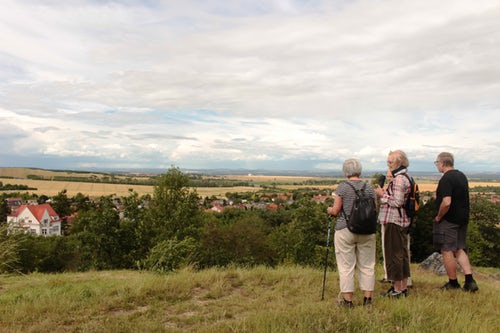

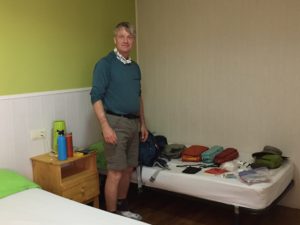 When you’re preparing to leave one place you know you won’t be returning to and walking 5 – 15 miles to another location, you plan carefully. You spend some time thinking about what you’re going to wear, how you’re going to pack, in case the weather changes and you need to shed a jacket or get to your rain gear and poncho in a hurry. If you happen to leave something back at the place you slept, you think long and hard about whether you really need it. About whether or not you can buy a replacement in the next tiny village you sleep in.
When you’re preparing to leave one place you know you won’t be returning to and walking 5 – 15 miles to another location, you plan carefully. You spend some time thinking about what you’re going to wear, how you’re going to pack, in case the weather changes and you need to shed a jacket or get to your rain gear and poncho in a hurry. If you happen to leave something back at the place you slept, you think long and hard about whether you really need it. About whether or not you can buy a replacement in the next tiny village you sleep in.